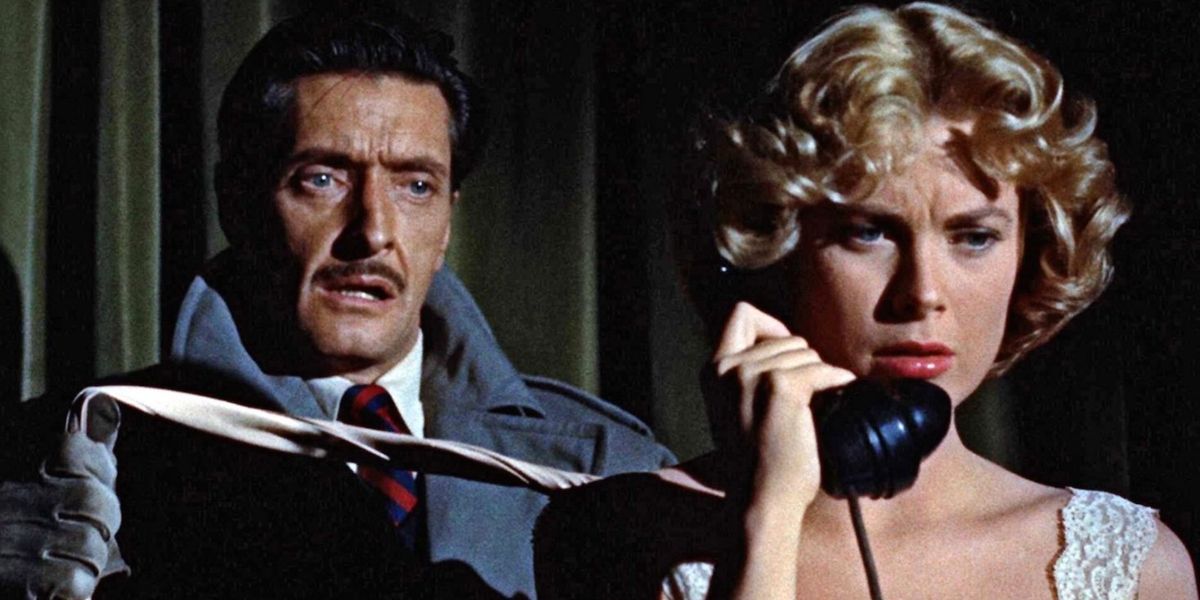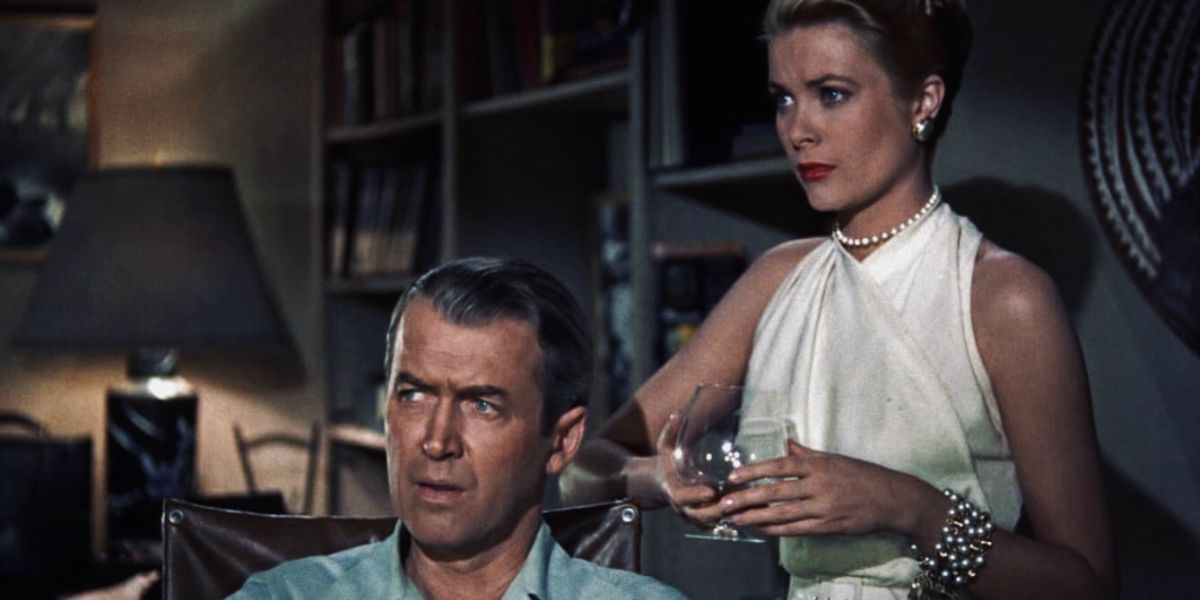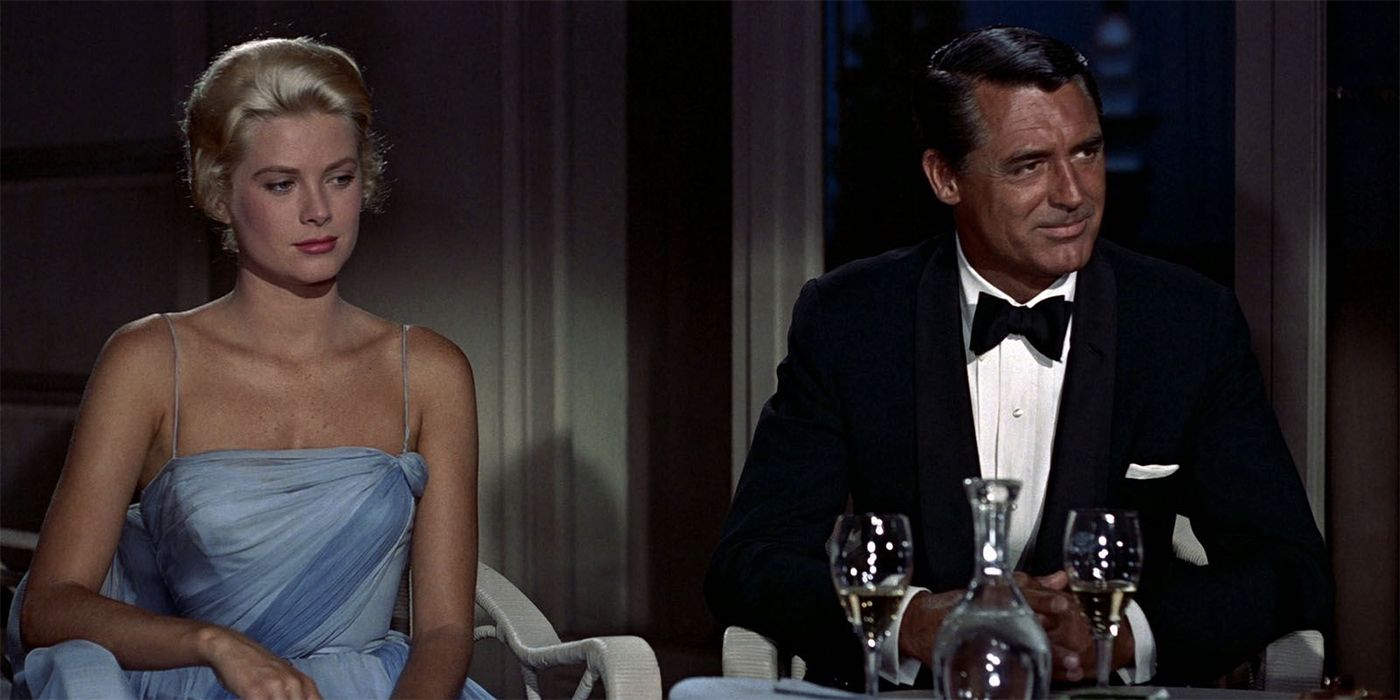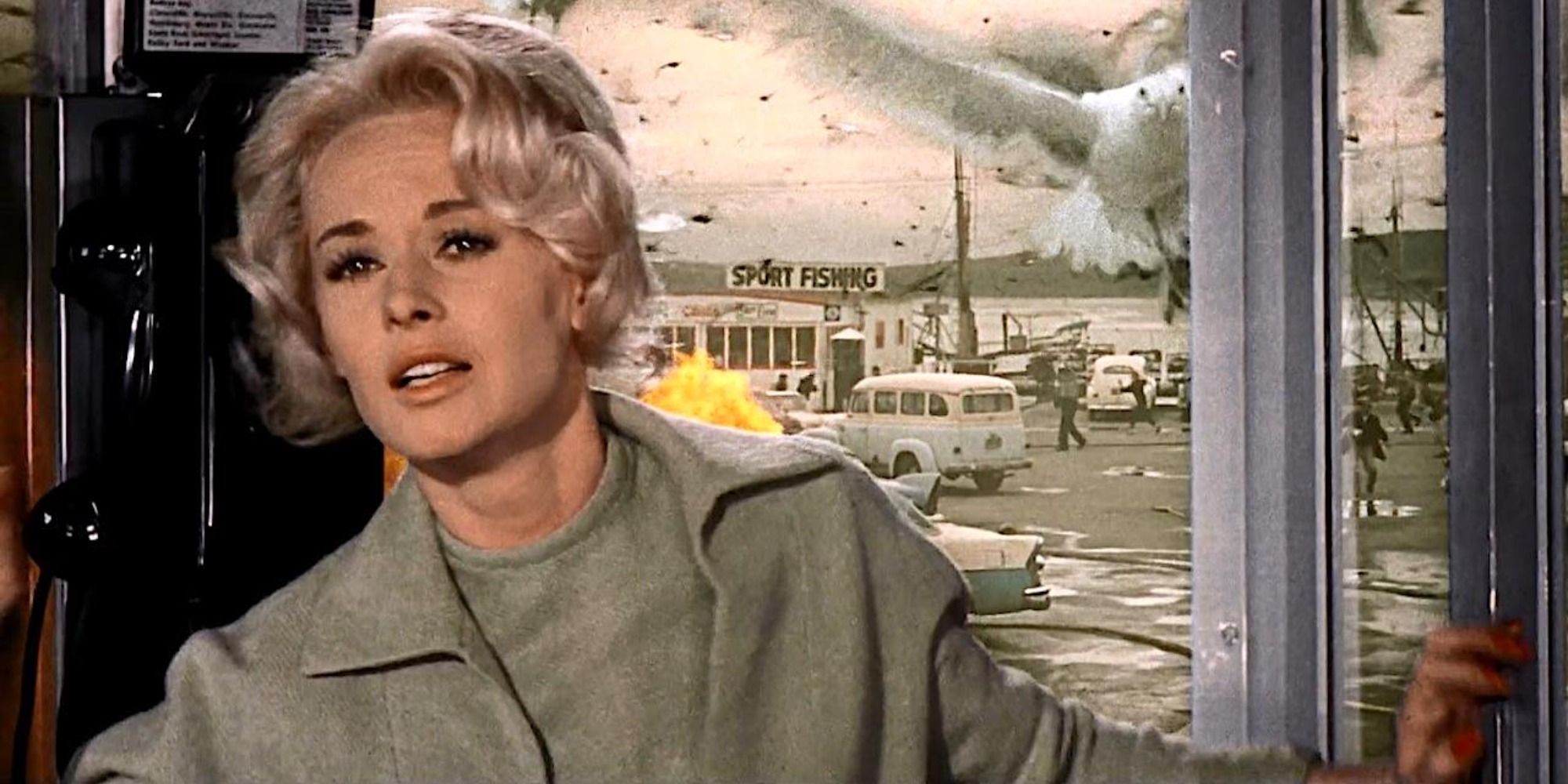Alfred Hitchcock is responsible for directing some of the most influential films in cinema history. Known as the "Master of Suspense," he directed over 50 feature films throughout his career, as well as hosting a television anthology series, Alfred Hitchcock Presents.
Hitchcock made his directorial debut in 1919 with the silent film The Pleasure Garden, but he was best known for thrillers like Psycho and Vertigo, which debuted decades later. Throughout his heyday, Hitchcock directed many movies that continue to hold up to this day, making for some absolute must-watches for any film fan.
Strangers on a Train (1951)
Starring Farley Granger, Ruth Roman, and Robert Walker, the plot involves Guy Haines (Granger) and Bruno Antony (Walker), who meet on a train and agree to "swap murders" so that neither of them gets caught. Guy will kill Bruno's father, and Bruno will kill Miriam, Guy's wife.
Shooting on the film took place in various locations, such as Forest Hills, New York, the Washington, D.C. area, and southern California. After Hitchcock's string of impressive movies in the 1940s, Strangers on a Train marked the beginning of a renaissance for the director as he delved fully into humanity's dark side.
Dial M for Murder (1954)
Dial M For Murder stars Ray Milland, Grace Kelly, and Robert Cummings. The film follows Tony (Milland) and his discovery of his wife Margot's (Kelly) affair with another man, fiction writer Mark Halliday (Cummings). Tony convinces an old acquaintance, Charles Swann, to enter their house at night while Tony is away to murder Margot. However, things go awry when Margot ends up killing Charles.
Dial M For Murder was shot utilizing Warner Bros.'s 3-D camera rig. After a series of previews of the film, the studio was told to revert to 2-D showings. The film was revived in 1960 with a showing of the movie at a theater in San Francisco, CA. The revival was so successful that a limited national re-release occurred in 1982.
Rear Window (1954)
Among Hitchcock's very best, Rear Window stars James Stewart as L. B. Jefferies, who is temporarily relying on a wheelchair in his Greenwich Village, Manhattan apartment. Jefferies regularly stares out of his rear window, which has a view of other apartments as well as the courtyard. One night, Jefferies observes that one of his neighbors is missing, and a man is cleaning a large knife in the man's apartment. Jefferies attempts to get his friend Lisa (Kelly) to believe that the neighbor was murdered.
The Greenwich Village apartment setting was filmed at Paramount Studios on a gigantic indoor set. The set also featured an extensive drainage system, which was built to accommodate the rain sequence that took place in the movie. In addition, a complex lighting system was constructed to pattern natural lighting effects for both the day and nighttime scenes. The effect is a slow-burn murder mystery that continues to chill audiences to this very day.
To Catch A Thief (1955)
The movie was released in August 1955 and featured Cary Grant and Grace Kelly in the lead roles. The plot follows a retired jewel thief, John Robie, who is newly suspected in several burglaries on the French Riviera. Robie attempts to clear his name by vowing to catch the new burglar.
The movie was Hitchcock's first time utilizing the VistaVision widescreen process. Additionally, To Catch a Thief marked Kelly's final collaboration with Hitchcock. The movie was primarily filmed at Paramount Studios, with additional filming taking place in southeastern France. Relying on the charisma of its stars, this is one of Hitchcock's most charming works.
The Man Who Knew Too Much (1956)
This is a remake of the 1934 film of the same name, which was also directed by Hitchcock. Starring Doris Day and Jimmy Stewart, the film follows the McKenna family as they vacation in Morocco. While en-route to Marrakesh from Casablanca, the family meets Louis Bernard. The family later witnesses Bernard, in disguise, die from a stab wound. Bernard warns the family that an assassination plot against a foreign diplomat is being formulated and that the family must try to stop it from happening.
Hitchcock considered a remake of his 1934 film in 1941 but was obliged to bring it back in 1956 after a contractual obligation from Paramount Pictures. Hayes, the film's screenwriter, was instructed not to watch 1934 original or read the script. When the film was released, audiences preferred the original, though today both are considered classics. Day won the Academy Award for Best Song in 1956 for "Whatever Will Be, Be (Que Sera, Sera)."
Vertigo (1958)
A San Francisco detective, Scottie Ferguson (Stewart), retires after a rooftop chase gone wrong where a fellow police officer fell to his death. In the aftermath, Scottie develops a fear of heights as well as vertigo. His ex-fiancée Marjorie suggests that severe emotional shock could be the sole cure. An old acquaintance asks Scottie to follow his wife Madeleine (Kim Novak) as she'd been acting strangely and that her mental state seemed to be on the decline. Scottie eventually realizes that all is not what it seems with Madeleine.
Vertigo is considered a classic Hitchcock film and a defining moment in his career. In 2007, the film was ranked as the ninth-greatest American film of all time, and, in 1996, a restoration took place to create a new 70 mm print and a DTS soundtrack. Psychological obsession was the film's central theme, especially Scottie's obsession with the women in his life. There has been endless discussion around this film, making it a vital entry in the Hitchcock canon.
North by Northwest (1959)
Roger Thornhill (Cary Grant) is mistaken for another man and kidnapped by an advertising executive. Thornhill is interrogated by a spy who later stages Thornhill's death as a drunken driven accident. Thornhill survives but is swiftly arrested by police. A government agency later realizes that Thornhill was mistaken for someone they had been targeting but decides not to rectify their mistake or risk their ongoing operation.
Once again, Hitchcock utilized the VistaVision widescreen process for North By Northwest. Production costs on the film became inflated due to a delay in filming, which triggered the penalty phase of Grant's contract. This resulted in an approximate additional $5,000 per day in fees before shooting. Yet, it wasn't all for naught, as this is to this day considered an undeniably strong thriller. In fact, in 2006, a group of fashion experts declared that the suit worn by Grant throughout the film was the "best suit in film history."
Psycho (1960)
Secretary Marion Crane (Janet Leigh) steals $40,000 in cash and drives out of town towards her boyfriend Sam's (John Gavin) house in Fairvale, California. Along the way, Marion stops at the Bates Motel and befriends the owner of the motel, Norman Bates (Anthony Perkins). The two chat for a while before Marion excuses herself for the night. As Marion showers, a silhouetted figure sneaks in and stabs her to death, forcing Norman to clean up the scene. When Sam, Marion's sister, and a detective trace Marion's whereabouts to the motel, Norman is forced to try and cover up what happened to Marion.
Hitchcock based Psycho on Robert Bloch's novel of the same name, which was also based loosely on Ed Gein. Hitchcock paid approximately $9,500 for the rights to the novel and ordered his secretary to buy every single copy of the story available to keep the book's ending a secret. The film is most famous for the pivotal shower scene, one of the best-known sequences in cinema history. The scene ran three minutes, was shot from December 17-23, 1959, and required approximately 78 shots.
The Birds (1963)
Actress Tippi Hedren made her film debut in The Birds, alongside Rod Taylor. The film follows Hedren and Taylor as Melanie Daniels and Mitch Brenner, respectively, defending themselves and Brenner's mother and sister against unexplained bird attacks. When numerous birds attack Melanie in the Brenner's raid, Mitch attempts to bring Melanie's car out of the garage without the birds attacking. Melanie, Mitch, his mother, and his sister end up escaping as their car drives past thousands of birds, which are ominously perched across the area.
The Birds' screenplay was based on Daphne du Maurier's novella of the same name, published in 1952. Many of the birds utilized in the film were real; however, it's approximated that more than $200,000 was used to create mechanical birds. The American Film Institute ranked The Birds as the seventh-best thriller in American cinema.
Marnie (1964)
Hedren and Hitchcock reunited with Marnie, where she portrayed Marnie Edgar, who robs her employer of $10,000. Marnie then changes her appearance and name and travels to Virginia and gets the chance to visit her mother. Mark, played by Sean Connery, meets Marnie when she applies for work at his company. Mark recognizes her from her previous robbery but hires her anyway. When Marnie steals money from his company, Mark discovers this and blackmails her into marrying him.
Hitchcock attempted to offer the role of Marnie to Kelly, who by that time was living in Monaco as Princess Grace. Kelly initially accepted but declined when the reaction to the news in Monaco was overwhelmingly negative. Marnie marked the final time Hitchcock's films would feature the traditional "Hitchcock blonde."

-9.jpg)
.jpg)



.jpg)
.jpg)
.jpg)
.jpg)

.jpg)